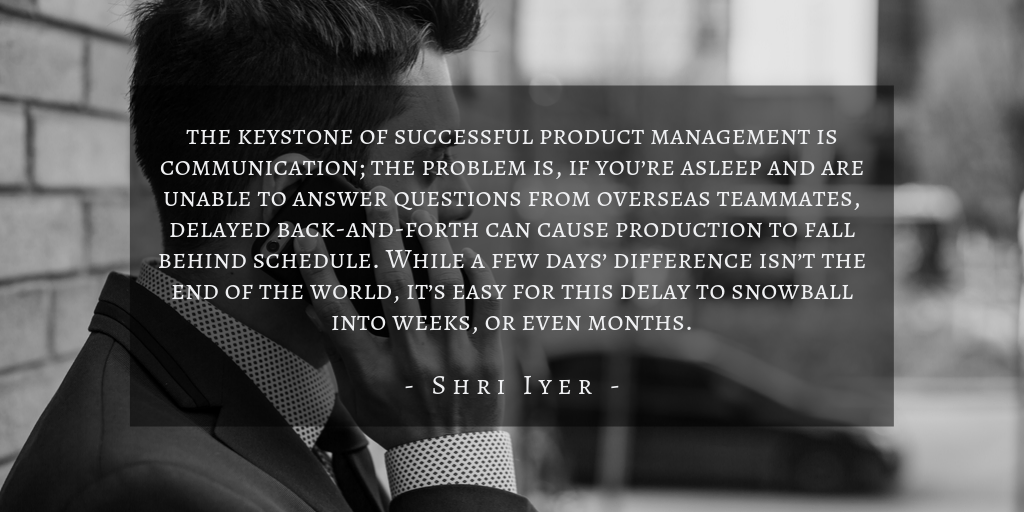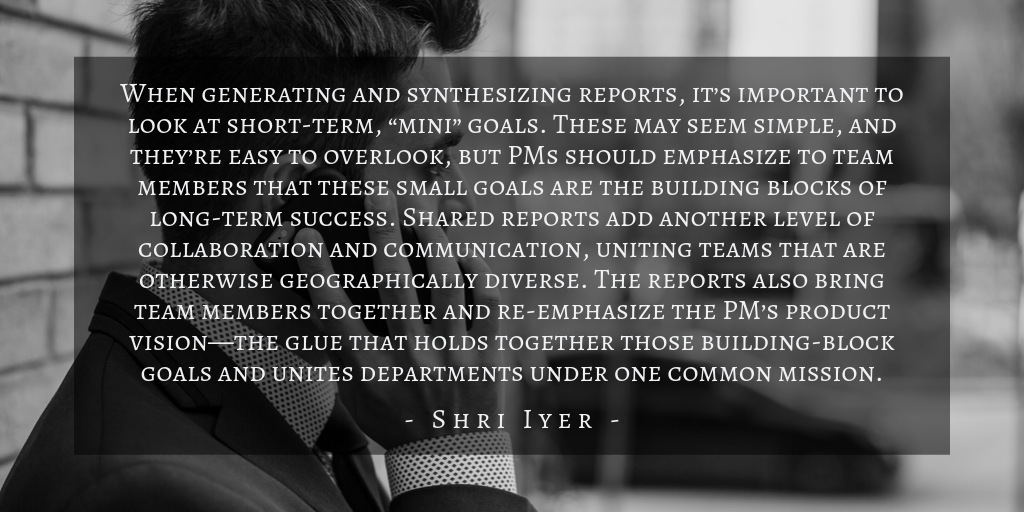As technology continues to impact how we do business, it also impacts where we do it. The tech boom that propelled us into the 21st century has completely changed the face—and location—of countless careers, including the role of the Product Manager. Traditionally, PMs worked with co-located teams, overseeing operations on-site and communicating face-to-face with team members. However, technological developments and flexible workplaces have allowed PMs to work with offshore teams. Working remotely comes with a unique set of challenges, and since it’s a young concept, it is easy for PMs to find themselves overwhelmed. In spite of these challenges, off-shore PMs are capable of finding great success. This blog takes a close look at the different types of off-shore PMs and how you can find success through this workstyle.
Defining Off-Shore PMs
Off-shore work usually comes in two distinct forms for PMs. Firstly, you can be a PM who is remote (say in another country) with other PMs and teammates working out of a U.S.-based headquarters. Alternatively, you may be a U.S.-based PM whose teammates work offshore. Of course, off-shore business operations cover a wide variety of domestic-foreign employment ratios. So, a PM could work domestically with the design team, while the engineering team exists on a completely different continent. Because of ever-changing workplace and industry dynamics, you could work directly with 50% of a company, 90%, or 1%.

Managing the Time Difference
Geographical distance from the rest of your team equates to time differences of several hours. This is a double-edged sword—on one end, you as the PM can generate a list of concepts, ideas, and tests for the team to complete as you are out of the office or sleeping. Then, once you’ve rested and returned to work, you can evaluate the team’s accomplishments in one fell swoop. On the other end, the keystone of successful product management is communication; the problem is, if you’re asleep and are unable to answer questions from overseas teammates, delayed back-and-forth can cause production to fall behind schedule. While a few days’ difference isn’t the end of the world, it’s easy for this delay to snowball into weeks, or even months.
To successfully manage that time difference, both sides have to allow some give-and-take. That may mean one team wakes up early while the other stays back late to communicate about logistics in a timely fashion. For any remote team, communication can be a tricky concept to balance successfully. That’s where constant communication is vital. While having off-shore PMs and teams check their phones outside of office hours is one way to accommodate this situation, it’s not ideal for anyone hoping to strike a perfect work-life balance. The key is to look for overlap between work schedules and set a communication schedule, offering structure to a highly flexible situation. This way, all team members can communicate clearly and fully, sharing all relevant information in correspondances, without sacrificing time with family and friends.
Balancing Management
It’s easy to collaborate with teammates when you’re in close physical proximity, whether that means holding several meetings each week or providing guidance in real time. However, off-shore PMs do not have the luxury of being able to walk ten feet and ask a question or offer a suggestion.

One of the biggest factors in being an off-shore PM is trusting the team from afar. This is not always easy to do—many PMs may second-guess their abilities to create a shared vision across all of the different teams and departments involved with the product. However, there are ways to ensure that you are properly managing and communicating with these teams. First and foremost, communication must be detailed with clear verbiage, pictures, figures, and even videos—this could mean the utilization of product management platforms such as ProdPad and ProductPlan. These platforms make communication and collaboration so much easier when the team is not colocated. Such software has dethroned email as the communication king for PMs and their teams, due to the ease of accessibility and variety of features.
Creating a visual is important for communicating with far-away teams, as that will ensure that teammates’ perspectives and ideas align well with your own. Even a simple doodle can be an effective means of communication, particularly if linguistic or cultural differences pose challenges in the design, sales, and marketing processes.
This point on culture is particularly important to note; cultural differences impact how employees work and communicate, factors that are important for PMs to know. Correspondence with overseas employees should be tailored to how businesses in their country of origin communicate. The last thing a PM wants to do is offend or be condescending towards teammates, as this places undue stress upon the team and creates difficult communication situations. This is why an understanding of workplace and country culture is so important for off-shore PMs.
Utilizing Reports
As part of the communication process for off-shore PMs, reports can offer an incredible amount of support and information for all parties. If your team members and departments are scattered across countries and continents, a detailed report is an ideal piece of communication. To establish a report system, consult your product roadmap and identify the key stages for each team. Once the necessary criteria are reached, teams can compile reports to share across departments. These in-depth reports offer valuable insight into progress on all parts of the product spectrum, creating more detailed overviews and allowing everyone, PMs especially, to adjust timelines and reorganize the communication schedule.

When generating and synthesizing reports, it’s important to look at short-term, “mini” goals. These may seem simple, and they’re easy to overlook, but PMs should emphasize to team members that these small goals are the building blocks of long-term success. Shared reports add another level of collaboration and communication, uniting teams that are otherwise geographically diverse. The reports also bring team members together and re-emphasize the PM’s product vision—the glue that holds together those building-block goals and unites departments under one common mission. Again, this is a situation where PM tools facilitate the most effective communications process. Not only do such tools break down strategy into its smallest components, but they also realign all teams with the common product vision. For Aha!, tabs for diagrams and hierarchy demonstrate the chronological process of achieving that vision, showing how each task adds to the overall vision.
One key element that brings all of this together is the use of not just roadmapping tools, but communication tools. Slack, Microsoft Teams, and Zoom allow all team members to share one common communications hub, where messages can be sent in real-time to individuals or the group as a whole. Such software keeps offshore PMs in the loop, as they can come up to speed on things that have happened during the day at HQ. In the case of Zoom, audio and video meetings can be recorded and syndicated for anyone who was not able to attend. Zoom even provides automatic transcribing. Using this feature, off-shore PMs can reference the transcribe or search it for keywords to quickly locate key information. This saves time, as PMs don’t have to listen to an hour-long recording to get to the two-minute segment they need in the moment.
This combination of communications and product management software, paired with time management and frequent check-ins, is the best recipe for success when working as an offshore PM. Colocated teams may have several benefits compared to remote teams, but with the right planning and attitude, geographical location will have no bearing on your success.

